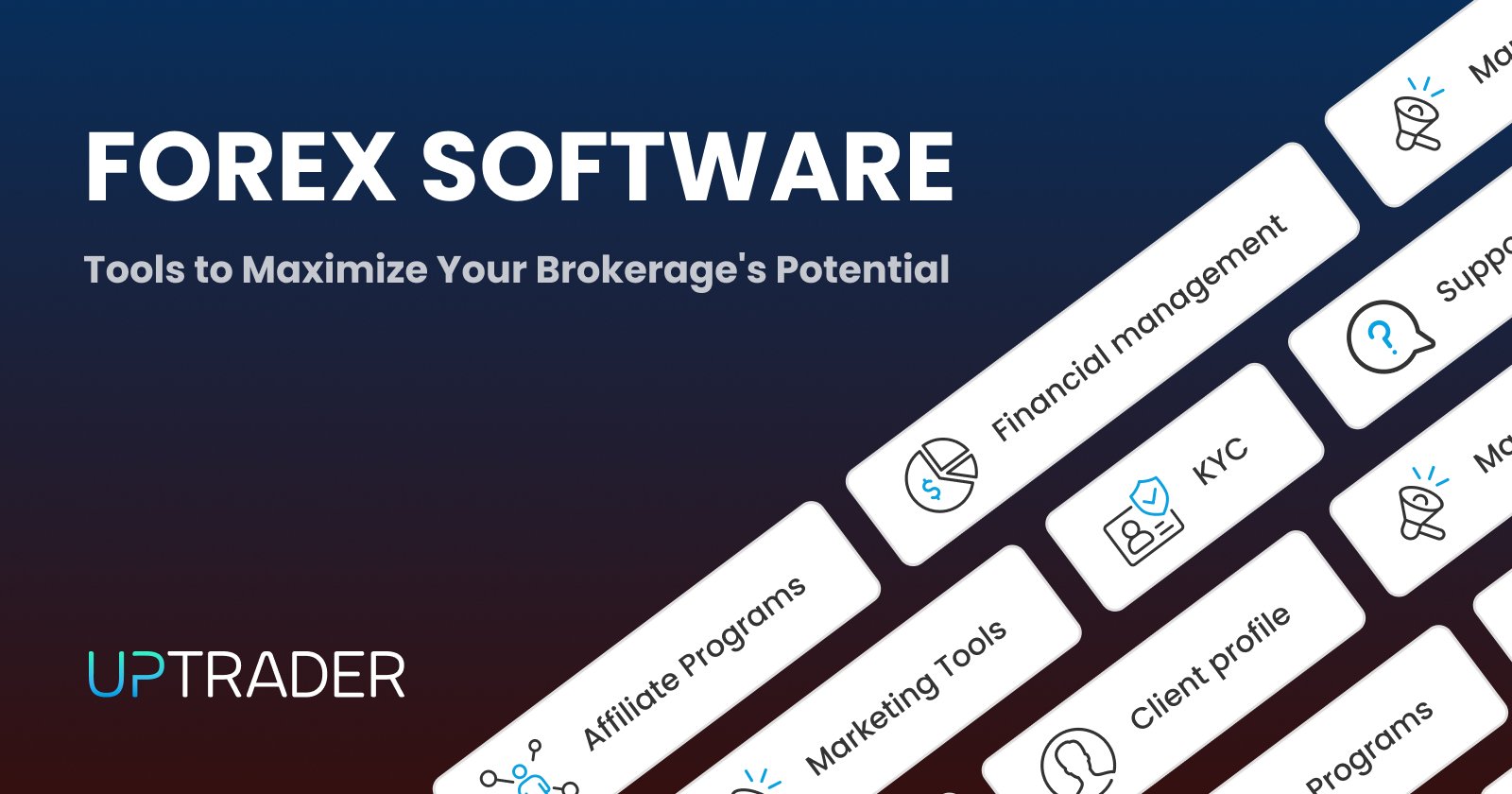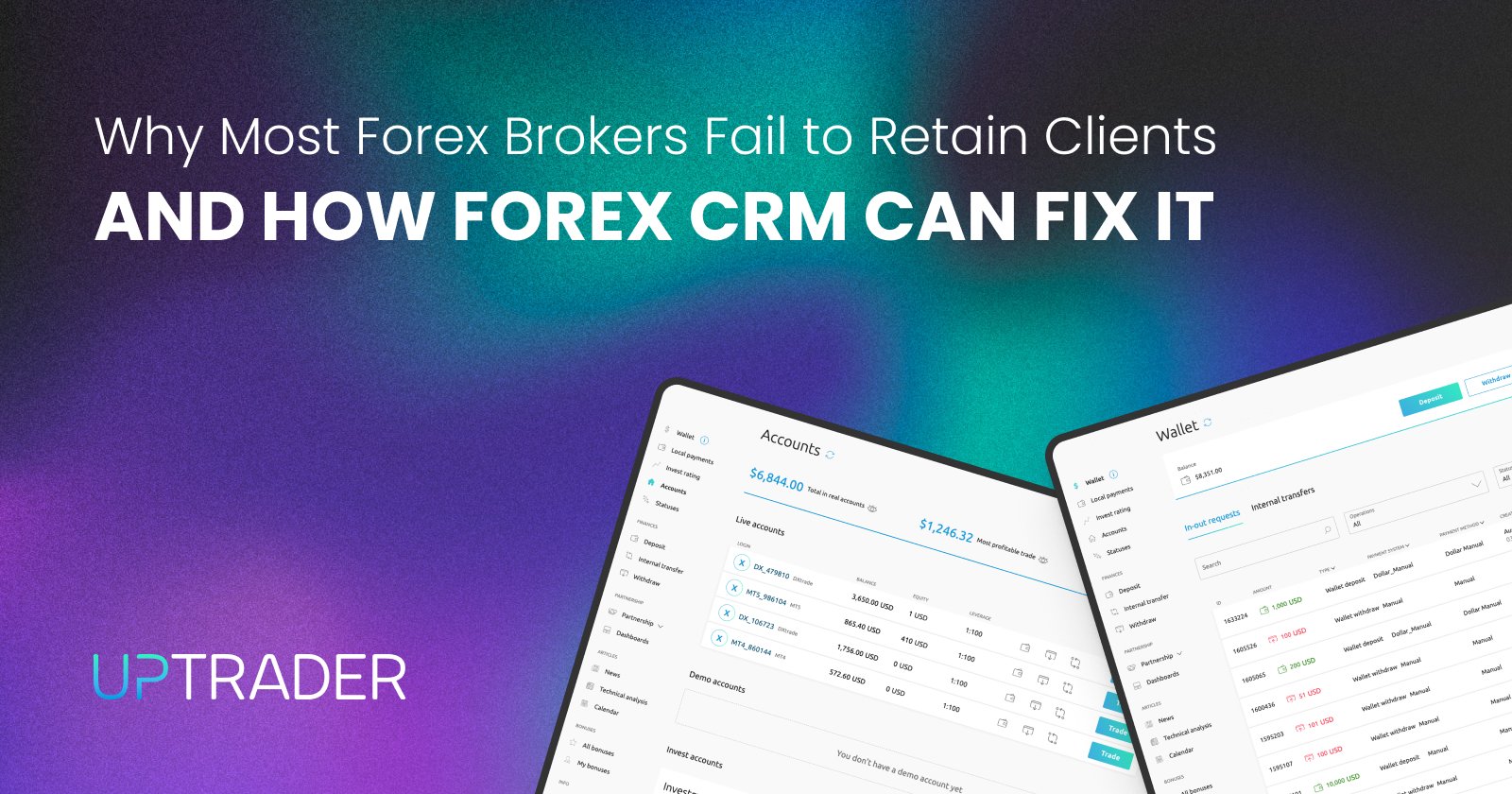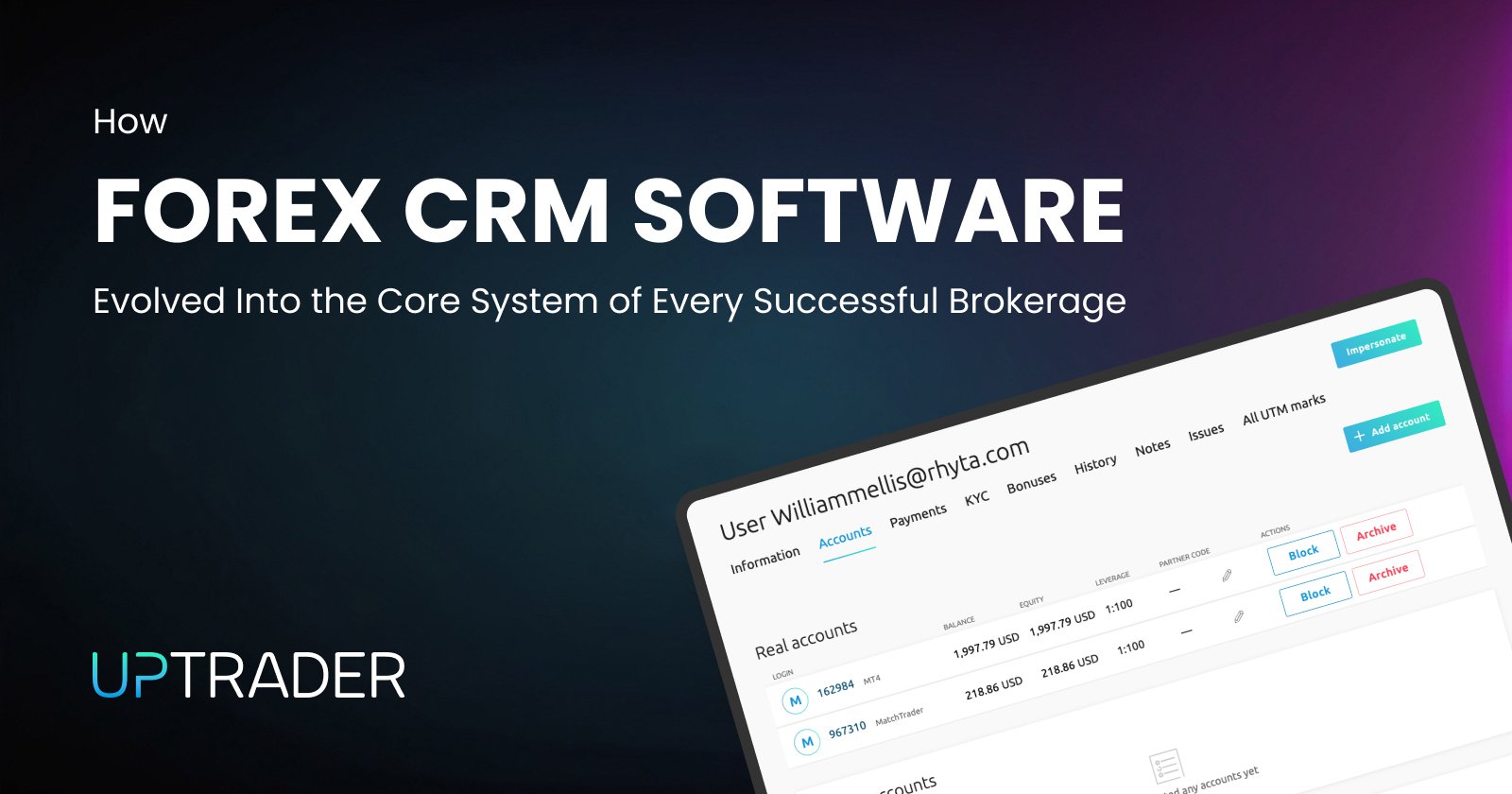Forex Software: Tools to Maximize Your Brokerage's Potential

Share this publication:
The foreign exchange (forex) market is one of the most volatile financial markets and has enabled many traders around the globe to make a fortune. Nevertheless, establishing a successful foreign exchange brokerage involves much more than offering the most competitive spreads or strong liquidity agreements. Forex dealers should provide the modern trader with a functional, trustworthy, and innovative trading experience. This is where forex software comes in.
In this article, we’ll explore the key forex broker solutions that can help brokerages enhance their service offerings, streamline operations, and ultimately maximize their potential. If you want to learn about forex software in-depth, check out this article!
What is Forex Software?
Forex software refers to a wide range of applications and tools that allow for trading, risk control, client management, and data analysis in the foreign exchange markets. Forex brokerage software generally consists of trading systems, customer relationship management systems, administrative back offices, and tools for managing risks. Opting for a reliable forex software provider helps brokerages sustain a complete trading experience for their clients with good market data and secure transaction provisions.
The Essential Components of Forex Broker Software
1. Trading Platforms
The trading platform may be considered the focal point of almost all the forex brokering services. Clients are able to carry out transactions, access and assess the market, and control their accounts to the fullest extent. In other words, superior forex broker software will most definitely include powerful and intuitive trading platforms designed for both novice and professional day traders.
In the foreign exchange trading environment, two of the most commonly used trading platforms are known as Trading Platform 4 and Trading Platform 5. The applications are popular in the market for their advanced charting tools, options for automated trading, and simple ease in addition to brokerage systems. On the other hand, a few forex brokers elect to create their platforms to offer specific advantages or benefits in addition to regular service.
Key features of forex trading platforms:
- Real-time data and charting: To trade effectively, you need accurate market data that can be accessed in real time. The leading forex platforms provide user-oriented charts and technical analysis tools, including some advanced features.
- Order execution: For any trading strategy to work there must be timely and precise order execution. For that reason, sophisticated platforms minimize the latency as much as possible without affecting the ease of execution.
- Algorithmic trading: Automation and the use of expert advisors (EAs) are increasingly adopted for forex trading. The best trading platforms allow traders to develop and implement in the market, trading systems for no-touch trading.
- User-friendly interface: A versatile and easy-to-use interface can significantly improve the satisfaction and retention of the users of the platform.
2. CRM (Customer Relationship Management) Systems
There are simple CRM tools that are ineffective in addressing many of the features that complex and large systems should incorporate in any forex broker software. This is because they help brokerage firms not only engage the clients but also ease the client onboarding process and improve client retention for the brokerage firm. Forex CRM systems are created keeping in mind the specific needs of forex brokers and therefore they integrate smoothly with other systems offered for forex services, for example, trading systems and back processes.
Key features of a forex CRM:
- Client onboarding and KYC: Streamlined onboarding processes with automated KYC (Know Your Customer) checks to ensure that brokers comply with regulations while providing a smooth registration experience for new clients.
- Lead and client management: Good CRMs for brokers allow them to keep track of their sales funnel, classify their clients, as well as implement different communication tactics.
- Analytics and reporting: In-depth analysis of the trading activities of clients, the turnover they generate, and their overall returns, enables brokerages to engage in informed decision-making.
- Integration with trading platforms: Forex CRMs correspond with trading systems very well allowing brokers to monitor the active trading of their clients and do follow-up very well.
3. Back-Office Solutions
To run a Forex brokerage business efficiently, it requires the effective incorporation of back-office solutions. This type of component of forex broker software deals with regulatory issues, accounting, risk management, and so forth. Back-office handles transport in and out of the company record, back-office medication of regulations, and back-office sustaining records for the regulatory bodies.
Key features of back-office solutions:
- Risk management: It is imperative to have systems in place for measuring risk exposure for all clients and continuously. Modern back-office systems provide these insights in real-time, with alerts on the types and levels of risks being assumed by the brokerage, to ensure that the levels of risk remain manageable.
- Transaction processing: Efficient back office systems provide mechanisms through which funds like clients’ deposits, withdrawals, and other transactions carry out processing in a timely and accurate manner.
- Compliance and reporting: Forex brokers often serve in highly regulated environments. That involves a lot of detailed reporting and adherence to legal compliance. Back-office quality software helps make legal compliance easier by generating reports automatically and keeping details of the reports through audits.
- Client account management: In-house software and related systems used by the brokers have provisions that facilitate the creation, updating, and maintaining of records for the assigned clients, the trading rights granted to them, and any other alterations made to their accounts.
4. Risk Management Tools
Risk management concerns the way the foreign exchange works, given the extent of leverage and volatility exposure there are risks to manage. Forex broker software should be embedded with some advanced risk controls to enable brokerages to insure the said capital, controlling client leverage and trading activity on a real-time basis.
Key features of risk management tools:
- Real-time risk monitoring: Efficient risk management applications include real-time data concerning client exposure, market risk, and overall risk levels which enable brokerages to promptly respond to market changes without delay.
- Leverage management: Forex broker application software controls the leverage limits on the clients based on the trading history of the client or the size of the account opened or due to regulatory policies in place.
- Stop-loss and margin call: Automated stop-loss orders and margin calls ensure that the client's losses are kept to a minimum, safeguarding the brokerage and the trader.
- Hedging capabilities: Brokers engage in hedging as a procedure for risk management and it is facilitated by creating forex software applications that enable execution of hedging techniques.
5. Liquidity Bridge and Aggregation Solutions
Liquidity is the blood of any forex brokerage. This is because the provision of deep liquidity to the brokers enables them to offer clients lower spreads and quick order execution. A liquidity bridge is defined as software that links a trading terminal of a brokerage with multiple liquidity providers for the purpose of executing orders at the best available prices.
Key features of liquidity solutions:
- Multi-bank liquidity: Forex broker software can aggregate liquidity from different providers and this helps the clients to get access to better spreads and a higher market depth.
- Order routing: The sophisticated and advanced liquidity bridges place orders on liquidity providers in an intelligent manner taking into account the price, volume of the trading, and speed of the execution.
- Integration with trading platforms: Liquidity bridges integrate with popular trading platforms, allowing brokers to provide real-time quotes and fast order execution.
- Scalability: As brokerages grow, liquidity answers should also be capable of growing in size to cater to additional trade activity and more customers.
6. Market Analysis and Trading Tools
To attract and retain clients, forex brokerages must offer robust market analysis and trading tools. They help traders with insights into market changes, price changes, and possible trades thus improving the overall trading experience.
Key features of market analysis and trading tools:
- Technical analysis indicators: Forex broker software is equipped with technical analysis indicators and charting tools that will assist the market players in conducting price actions and trend analysis.
- Fundamental analysis: News, economic calendar, and the studies of fundamental factors contribute to the decision-making processes of the traders.
- Trading signals and copy trading: Dedicated trading signals and copy trading technologies turn out to be helpful for new traders who want to trade anyway as they can simply “piggyback” on the more experienced professionals’ actions.
- Sentiment analysis: Many forex broker software packages offer a sentiment analysis module that measures market sentiment and social media activity and offers such information to traders.
Choosing the Right Forex Software Provider
Selecting a forex software provider is a critical decision that can impact the success of a brokerage. A reputable provider will offer comprehensive forex broker solutions that are reliable, secure, and scalable. Here are some factors to consider when choosing a provider:
- Reputation and experience: Look for a provider with a solid record practiced within the forex sector. Providers with vast experience comprehend the set challenges within the market and can provide such solutions.
- Customization and flexibility: The most suitable foreign exchange software suppliers provide bespoke solutions for different brokerage houses. This is important in scaling and changing with the market needs.
- Regulatory compliance: Forex broker software has to consider regulatory requirements to guarantee the safety of the client's funds and information. Select a vendor who has a compliance-first approach and can adjust to changing laws.
- Technical support and training: A dependable vendor will guarantee appropriate technical support and training for the brokerage employees to be able to operate the system. This is vital when it comes to back-office systems and CRM systems that facilitate the primary operational processes.
- Security features: Given the volume of financial transactions and sensitive data involved, forex broker software must prioritize cybersecurity. Focus on those providers who use enhanced encryption along with multi-factor authentication and other protective measures.
Benefits of Implementing Forex Broker Software
Investing in robust forex broker software offers several advantages that can help brokerages thrive in a competitive market:
- Improved client satisfaction: With dependable trading systems and functional support departments, the clients experience no difficulties starting from opening an account, right to trading.
- Operational efficiency: Automated functions and joined-up systems enable brokers to enhance their service, lower mistakes, and pay more attention to the expansion of their undertakings.
- Enhanced risk management: Advanced risk control methods used in brokerage firms can help protect the firm by controlling the exposure of the brokerage, limiting the amount of leverage employed, and preventing losses.
- Data-driven insights: Forex system offers the users rich analytics that helps in the formulation of business strategies, customer retention activities, and even market share.
- Competitive advantage: Brokerages can position themselves better and secure more clients by giving superior tools, better order execution, and low spreads.
Conclusion and Final Thoughts
Given the current forex market which is characterized by cut-throat competition, it follows that brokerages have to make use of sophisticated, effective, and all-rounded software for a forex broker to be in business. Forex software which includes tools such as trading platforms and CRM systems, back-office applications, and risk management tools is very important in enhancing the functioning of the system, improving service delivery, and increasing profits in the organization.
Hence, by working with a professional forex software provider and opting for the right solutions that correspond with their business strategies, brokerages can improve their services and cull a market share from the competition. For these reasons, putting the right software is not just a matter of operational effectiveness; it is a rather sound business decision that fosters growth and success in the long run.
If you are willing to take advantage of incredible features like Social Trading, PAMM, and MAM modules, Copy Trading platforms, CRM solutions, etc, then talk to a consultant on our site, or try UpTrader today.







